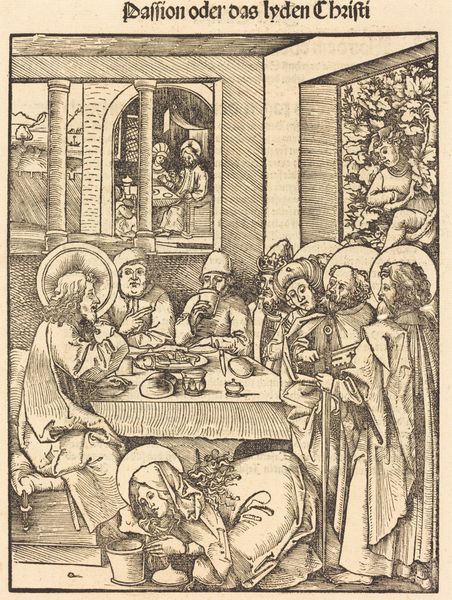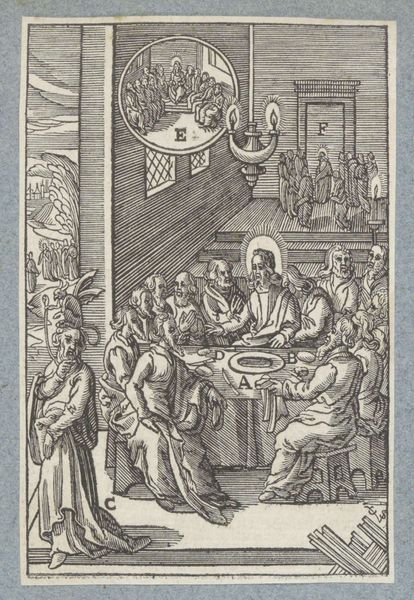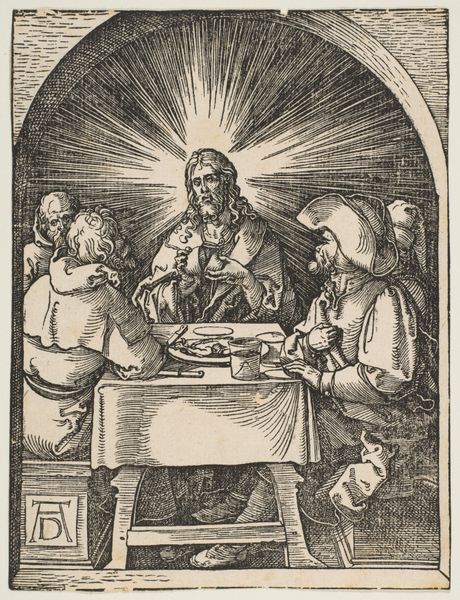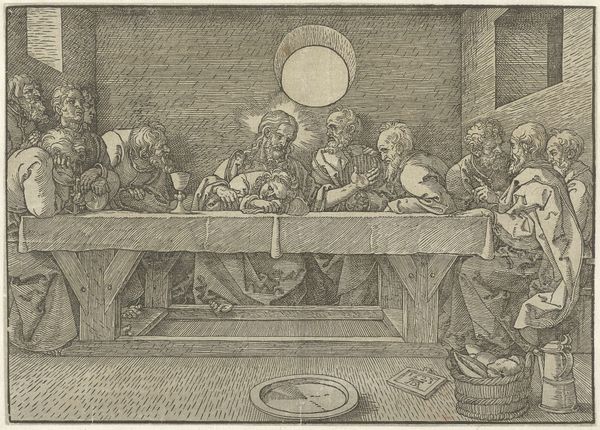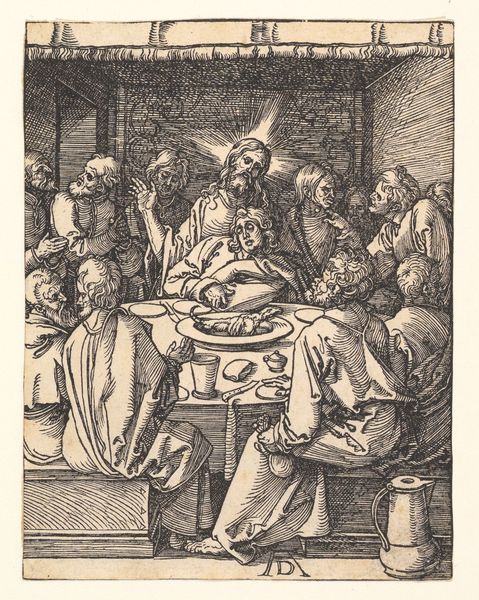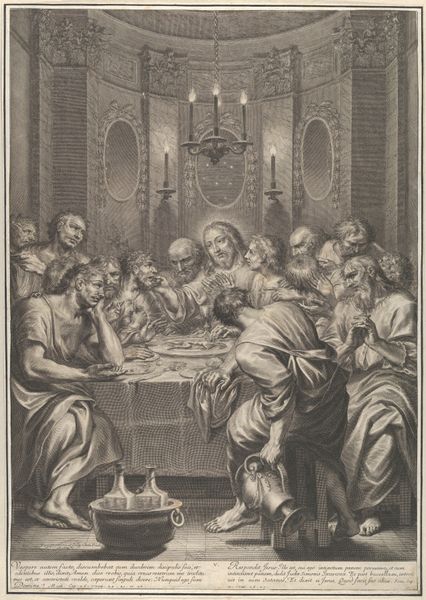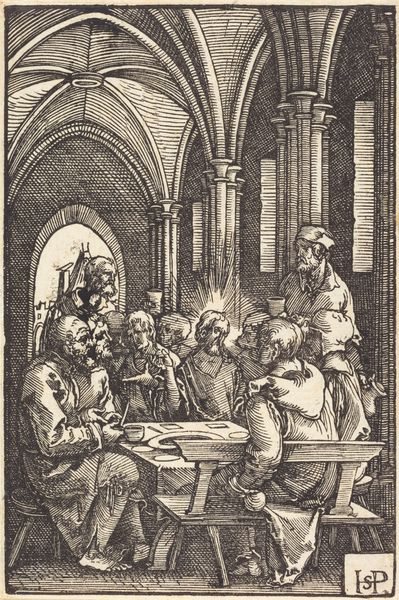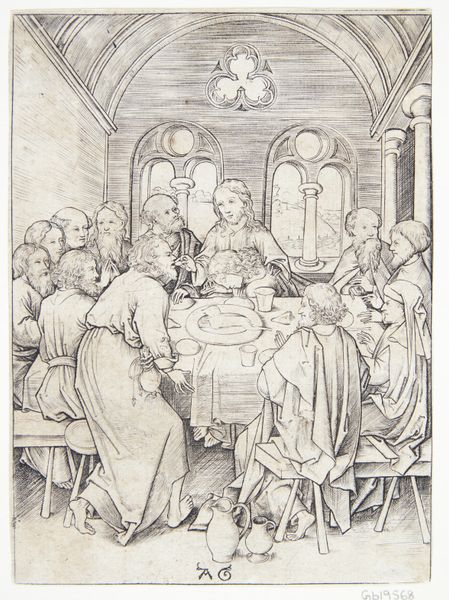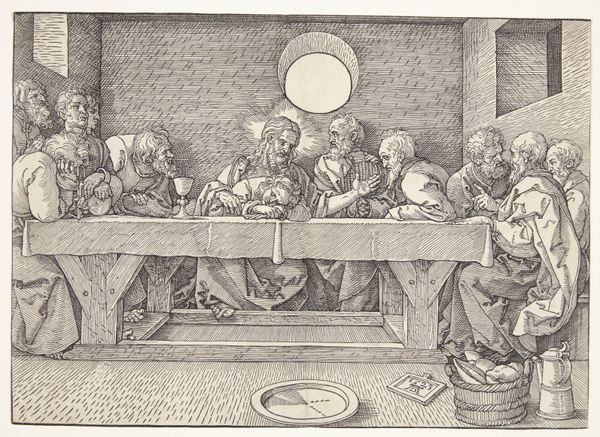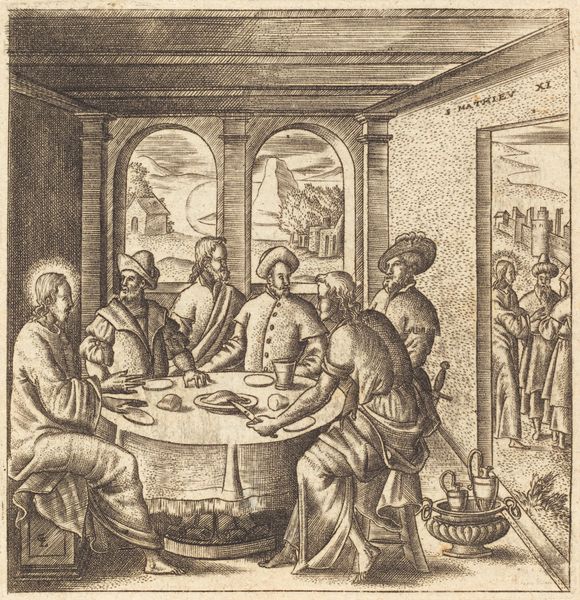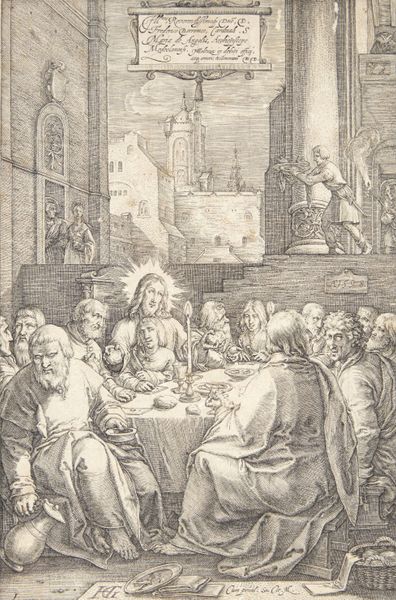
drawing, print, engraving, architecture
#
drawing
# print
#
figuration
#
11_renaissance
#
men
#
line
#
history-painting
#
northern-renaissance
#
italian-renaissance
#
engraving
#
architecture
Dimensions: sheet: 11 3/4 x 8 3/4 in. (29.8 x 22.2 cm)
Copyright: Public Domain
Curator: This is Albrecht Dürer’s engraving, The Last Supper, created around 1510, now housed at The Metropolitan Museum of Art. Editor: It’s strikingly austere. The use of line creates such a focused and rather grave atmosphere, even with the dynamism of the scene. Curator: Indeed. Dürer's mastery of line is remarkable. Consider how the varying thicknesses and densities define form, light, and shadow within a rigid architectural setting. Editor: That vaulted ceiling looms heavily. Knowing Dürer was a Northern Renaissance artist working amidst burgeoning social and religious reform, can you elaborate on what this portrayal may reflect about the era? It's such a departure from the opulence we often associate with depictions of this scene, isn’t it? Curator: Certainly. The Protestant Reformation, which challenged established Catholic doctrines, advocated simplicity and a direct relationship with scripture. Dürer's rendering, absent of overt ornamentation, likely mirrors this shift, placing emphasis on Christ's sacrifice rather than the grandeur of the Church. Look how he's minimized symbolic elements. Editor: Yes, the symbolism is dialed back. Instead, we see something quite humanist, and frankly, very male. It raises interesting questions about the construction of masculinity around faith and power during the period. How the narrative constructs an exclusive depiction that excludes women is problematic, perpetuating existing hierarchies. Curator: While a feminist critique is valid, I encourage us not to disregard his precise understanding of perspective. Notice how Dürer used orthogonals and vanishing points, learned during his Italian travels, to render depth. Editor: True. Yet, what narratives are enabled, and silenced, through such compositional techniques? Art isn’t created in a vacuum, and the conscious exclusion of women from such a foundational narrative in the New Testament has consequences, particularly during periods of social reformation. Curator: An important dimension to consider, definitely. Looking closely allows one to appreciate its compositional and philosophical complexity, even through these stark lines. Editor: Indeed. Dürer provides us with a compelling artifact, and our conversation invites a richer interpretation.
Comments
No comments
Be the first to comment and join the conversation on the ultimate creative platform.


